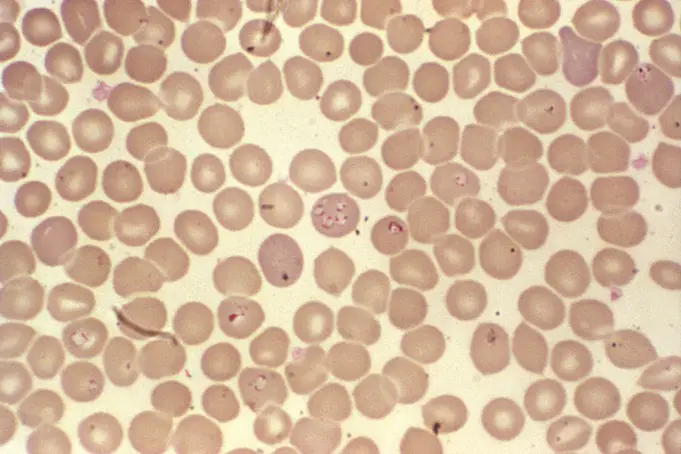Babesiosis is a malaria-like illness caused by the microscopic parasite of the genus Babesia and transmitted by ticks. Transmission of the disease occurs via the bite of an infected tick, and it is most common in the Midwestern and Northeastern United States and parts of Europe.
It is a seasonal disease and occurs mainly in warm weather. Asides the bite of an infected tick, other means of transmission are blood transfusion from an infected donor of blood products, or by transmission from mother to child.
Babesia is said to be the most common type of blood parasite after trypanosomes, and they have a significantly negative impact on the health of domestic animals in areas with predominantly warm weather. The disease is also known as redwater, Texas cattle fever, or piroplasmosis.
The same tick that is responsible for carrying Babesia can also carry the bacteria that causes Lyme disease. Studies have shown that one-fifth of patients diagnosed with Lyme disease were also infected with the Babesia parasite.
According to the Center for Disease Control and Prevention (CDC), areas in the United States where Babesiosis is prevalent are New Jersey, New England, Minnesota, Wisconsin, and New York.
The symptoms of Babesiosis and Lyme disease are similar; comorbidity of both diseases can have severe effects.
Causes of Babesiosis
Babesiosis is caused by a parasite belonging to the genus Babesia and the phylum Apicomplexa. The virus is also known as Nuttalia.
The parasite typically involves two hosts, one of which is a rodent and the other, a tick. During a blood meal, the infected tick infects the rodent with sporozoites which go on to differentiate into male and female gametes and subsequently reproduce. The rodent then acts as a carrier for the parasite.
Humans become infected when between by infected tick during a blood meal. The parasite reproduces and multiplies in the bloodstream, causing clinical manifestations of the disease.
Symptoms of Babesiosis
Symptoms of the disease vary from one person to another. These symptoms include:
- Cough
- Muscle pain
- Headache
- Sore throat
- Anorexia
- Joint pain
- Vomiting
- Loss of weight
- Nausea
- Abdominal pain
- Conjunctivitis
- Yellowing of eyes and skin
- Enlarged liver
In severe cases of the disease, symptoms similar to malaria occur, with fevers as high as 40.5 °C (105 °F), shivering, and severe anemia.
Other complications of the disease include abnormally low platelet count (thrombocytopenia), damage to vital organs such as the kidneys, liver, and lungs, disseminated intravascular coagulation, also known as blood clots, and death.
Risk Factors
The risk of Babesiosis is particularly high in:
- People who have a weak immune system usually caused by an illness such as cancer and AIDS
- Old people
- People who do not have a spleen
- People living with other severe health conditions like kidney and liver disease
Diagnosis
Babesiosis can be diagnosed by the examination of a blood sample under a microscope for the Babesia parasite. Diagnosis can only be performed in specialized laboratories by blood smear microscopy and requires a lot of time and expertise.
Results of the smears can be negative if there is a significantly low population of the Babesia parasite in the blood, especially in the early stage of the disease. The diagnosis needs to be iterated to confirm the presence of parasites in the blood.
Another method by which the parasite can be detected is by polymerase chain reaction test (PCR). This test has been developed to detect the parasite in the blood, and it may be as sensitive as the blood smear examination.
However, the test is significantly more expensive, and testing is usually performed in conjunction with the blood smear examination.
Other means of laboratory testing includes testing for the number of red blood cells and platelets, and the indirect fluorescent antibody test (IFA).
Treatment
Babesia does not respond to antibiotics alone. Treatment of the disease requires antiparasitic drugs, such as those used to treat malaria. There is a risk of developing symptoms after being treated.
These must be retreated again to completely clear out the parasite from the body. People with a weakened immune system may need to be treated for long to rid the body of the infection.












